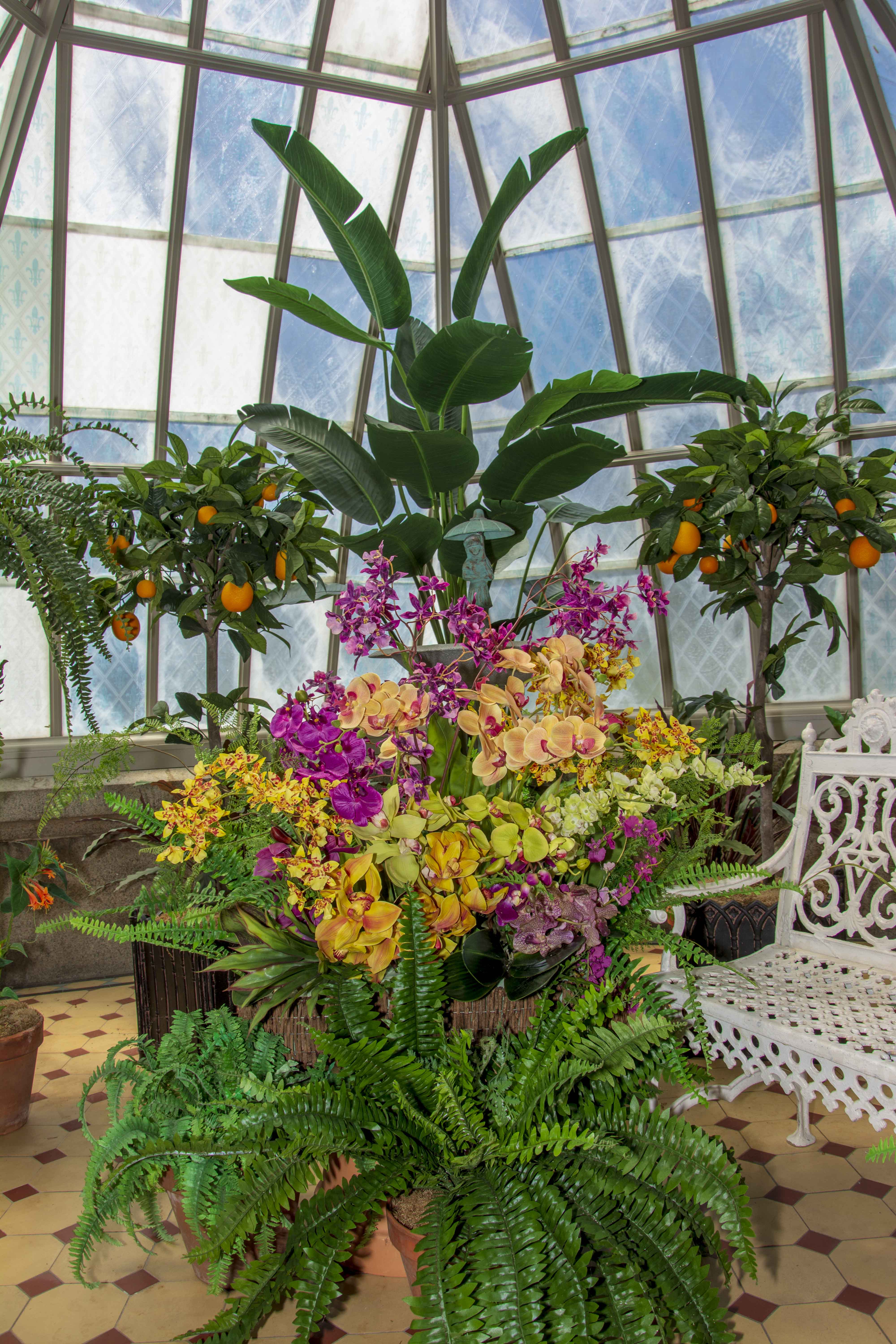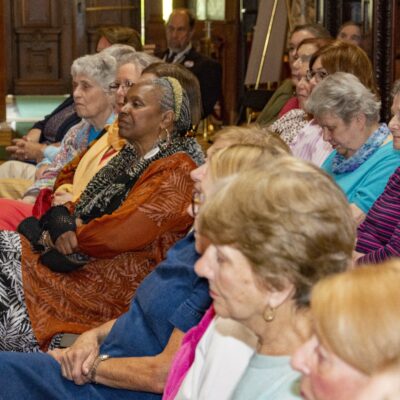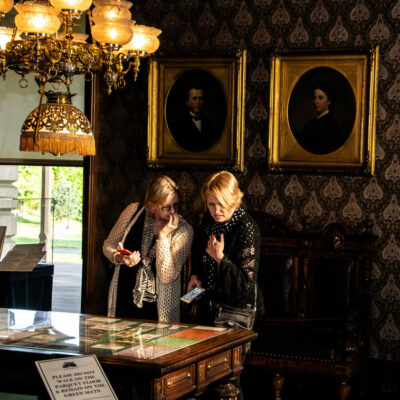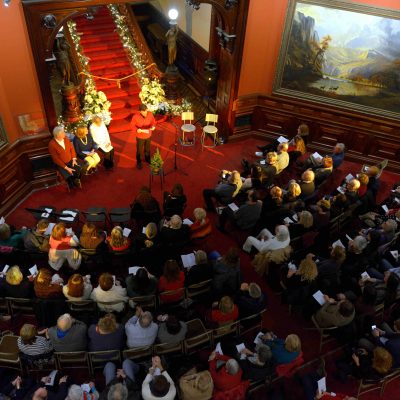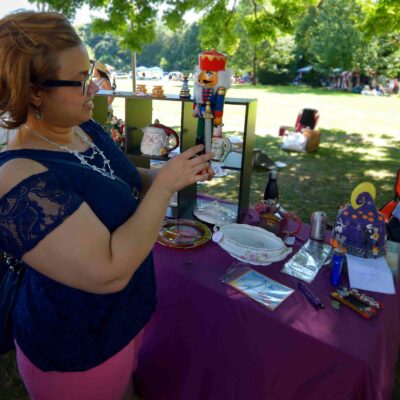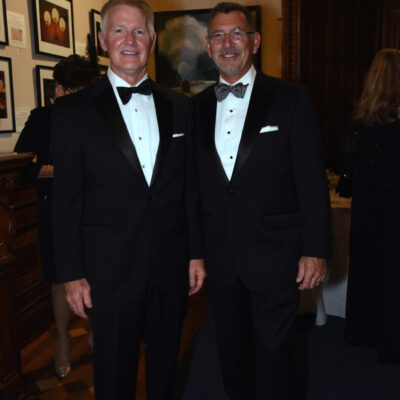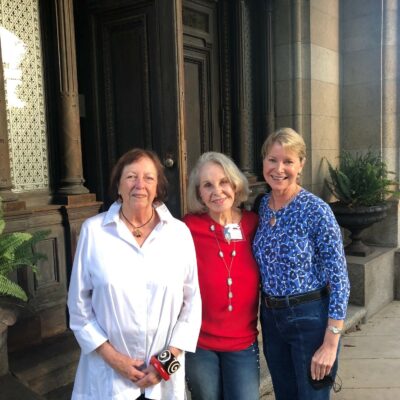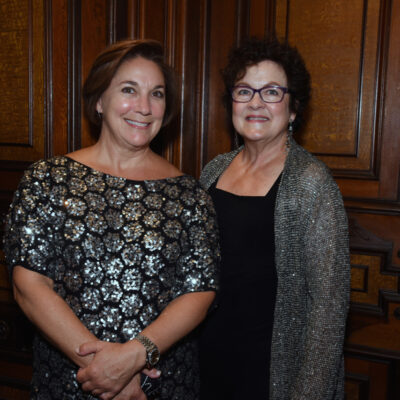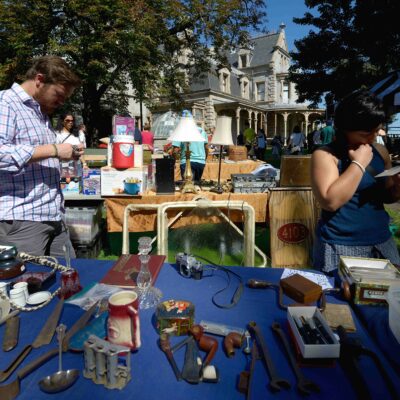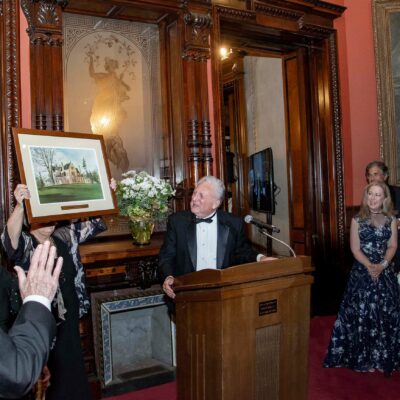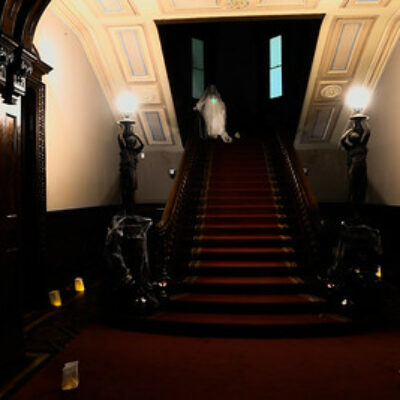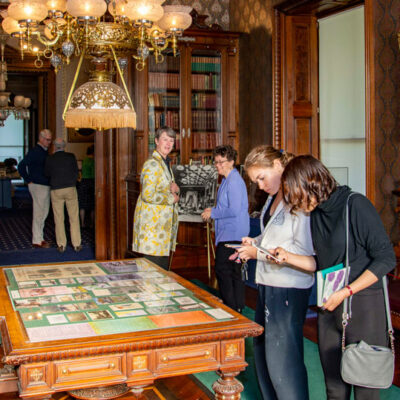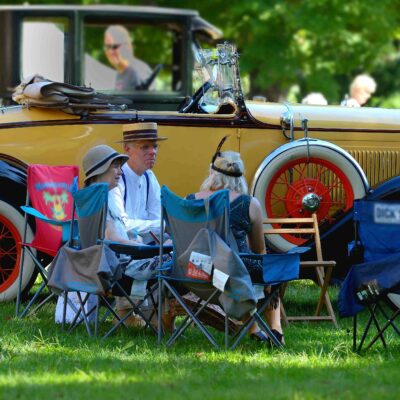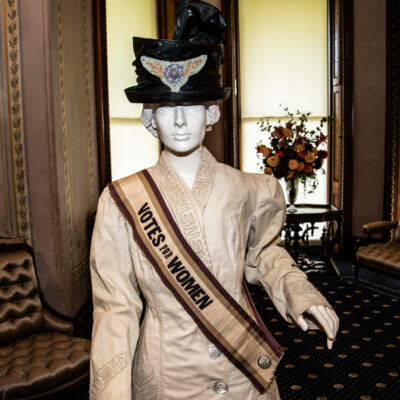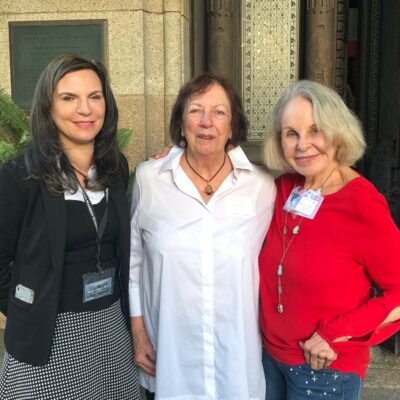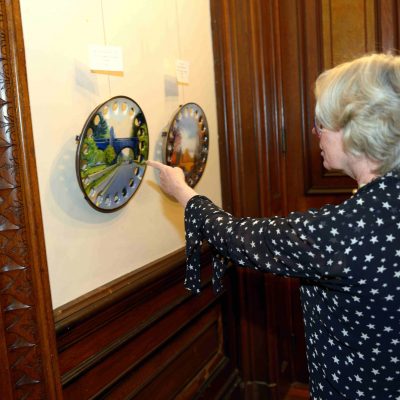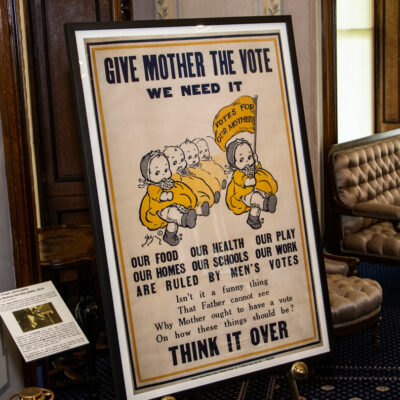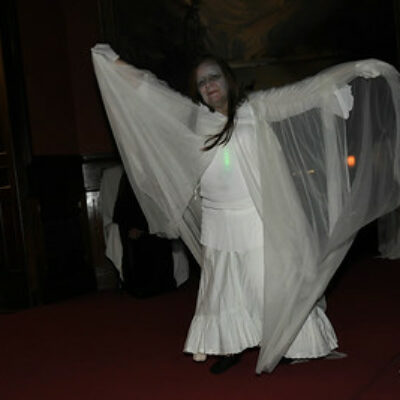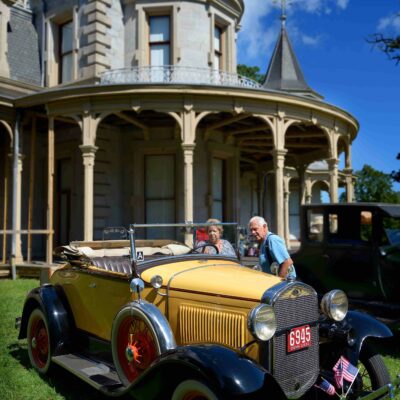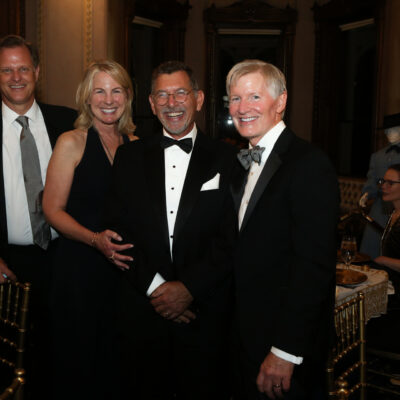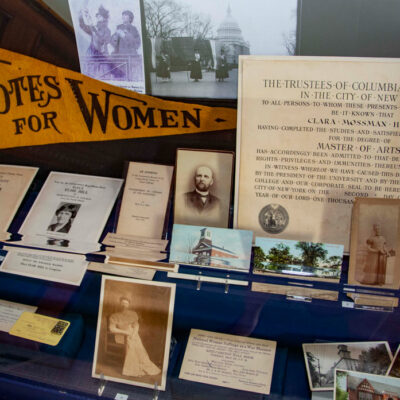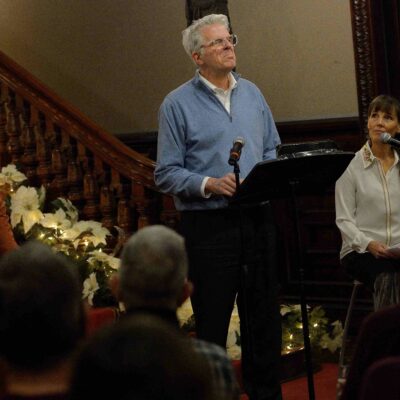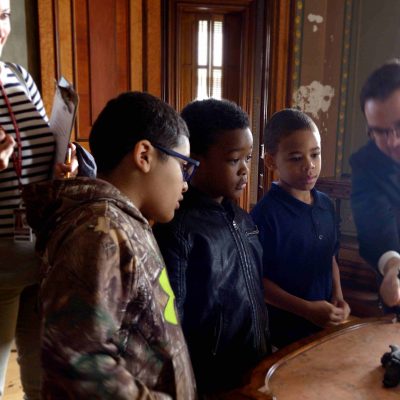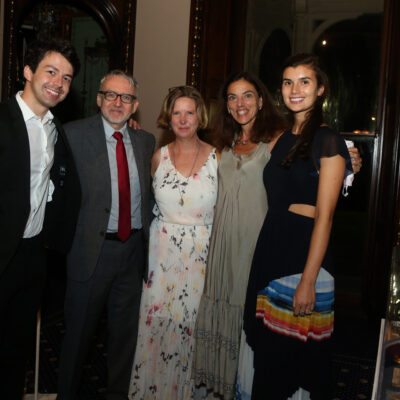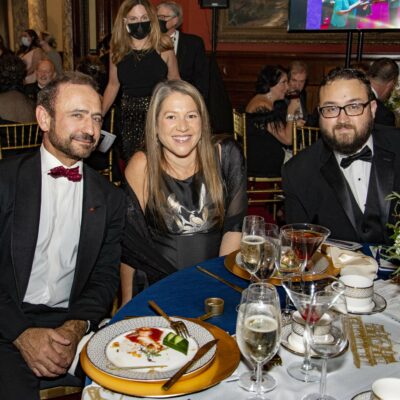Welcome to our past exhibit on the American pastime of collecting. This page is a work-in-progress as we’ll be adding photographs, articles, and references to lectures held on the topic.

The Colossi of Memnon photographed on 1884 trip to Egypt, Courtesy of The Westport Library (re-photographed by Sarah Grote Photography)
Collecting in Victorian America: The Great Divide of the Gilded Age
July 11, 2018 – November 4, 2018
Curated by Kathleen Motes Bennewitz
In the 19th century, well before Google, Facebook, and Pinterest, Americans used their leisure time for a variety of pastimes, one of which was collecting. People obsessed over trends and scientific breakthroughs that swept society— and tourism, maps, rare objects, and “orchidelirium,” to name a few, became significant diversions from the grim realities of the era, but also a way to experience new inventions and discoveries and expand on a newfound understanding of the world.
Chromolithograph of Alfred Bierstadt’s Domes of Yosemite (1867) Lockwood-Mathews Mansion Museum Permanent Collections (photo by Sarah Grote Photography).

Stereoscopic views, precursors of 3D technology, underscored an era of unprecedented mobility; this was the age of steam travel, railways, westward expansion, the rise of national and international tourism, and the publication of the first commercial guidebooks. Collecting was a serious business; and in time, improved standards of living, transportation technology, and mass productions enabled Americans across gender and class, to participate in the science. Chromolithographs of paintings such as Bierstadt’s Domes of Yosemite, 1867, owned by LeGrand Lockwood, were deemed “Pictures for the People” and attained unprecedented popularity as, “For ten dollars the working man may glorify his house… delight his eyes and his soul…warm his patriotism and feed his ambition,” wrote The Western New Yorker in 1869. Miniature versions of renowned sculptures were mass produced and priced to be acquired for the simplest of homes.
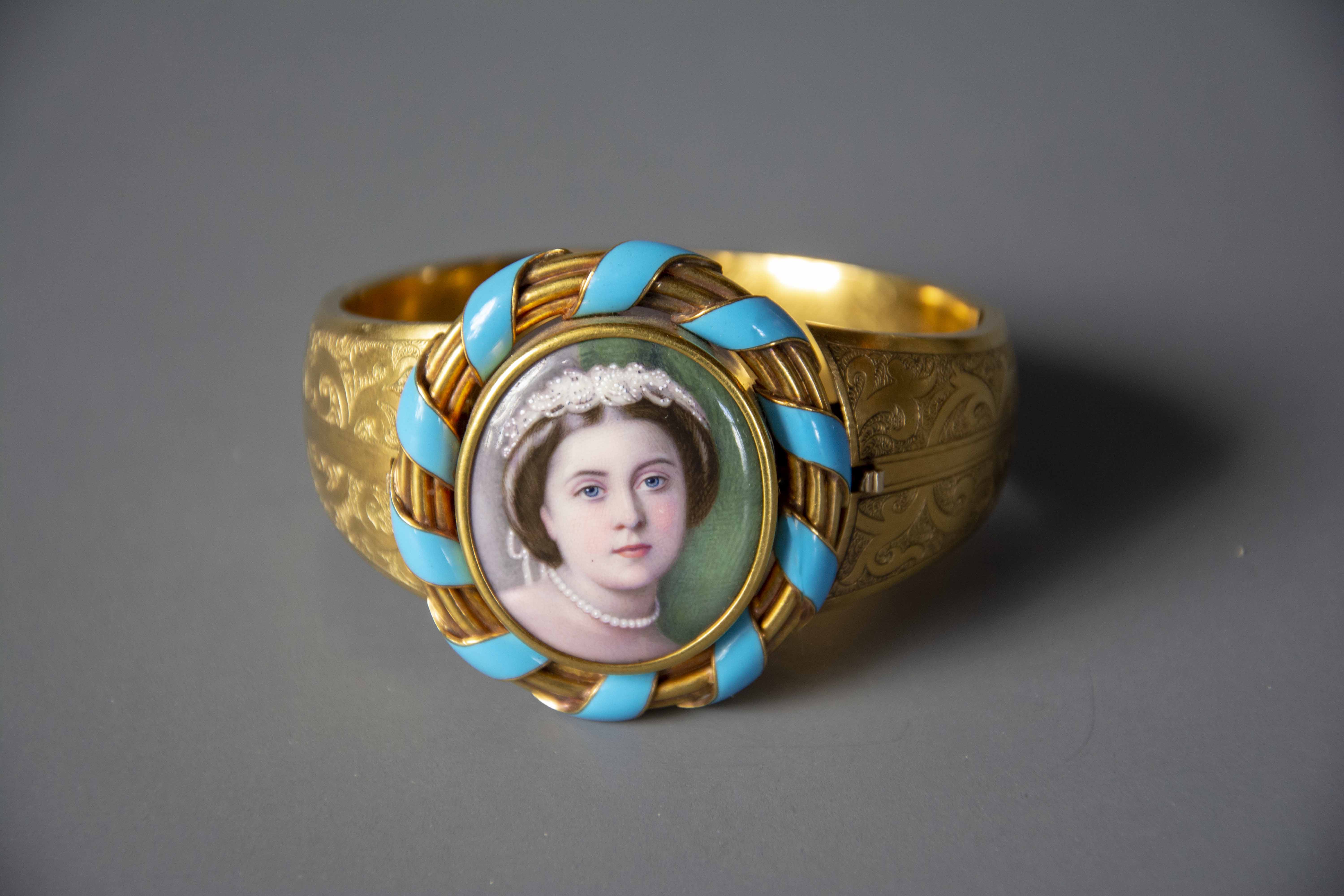
Rare gold bracelet with a lock of hair given by Queen Victoria’s eldest daughter, Victoria Adelaide, Princess Royal to her governess Madame Rollande de la Sauge, circa 1850s. Private collection (photographed by Sarah Grote Photography).
The exhibit featured a rare gold bracelet with a lock of hair given by Queen Victoria’s eldest daughter, Victoria Adelaide, Princess Royal, to her governess Madame Rollande de la Sauge, Private collection; Albumen prints of Egypt, France, and Italy, 1870s-80s, courtesy of The Westport Library; a Japanese kimono, circa 1876, from the Mathews Family, LMMM Permanent collections; a reduced cast of Hiram Powers’, The Greek Slave, 1847, courtesy of Westport Historical Society; and a John Rogers sculpture group, Taking the Oath and Drawing Rations, 1865, courtesy of the New Canaan Historical Society; exotic orchids, ferns, and flowering plants courtesy of Danna DiElsi, The Silk Touch.
High Society’s collecting practices were stimulated by new wealth of the post-Civil War era and need to assert America’s cultural literacy. LeGrand Lockwood’s own magnificent collection of art, maps, and books served as a launching pad for the exhibit, but more importantly as a foil to some of the populist and egalitarian trends presented. Viewers gained a broad understanding of the relevancy of the Victorian passion to accumulate and study across socio-economic classes and how collections of rarified, found, or mass produced objects can shed light on 19th century interests, new technologies, commercial enterprises, and shared American values.
